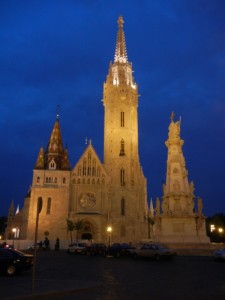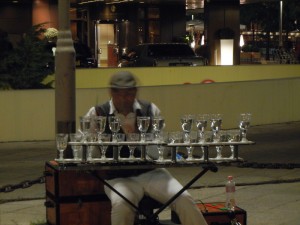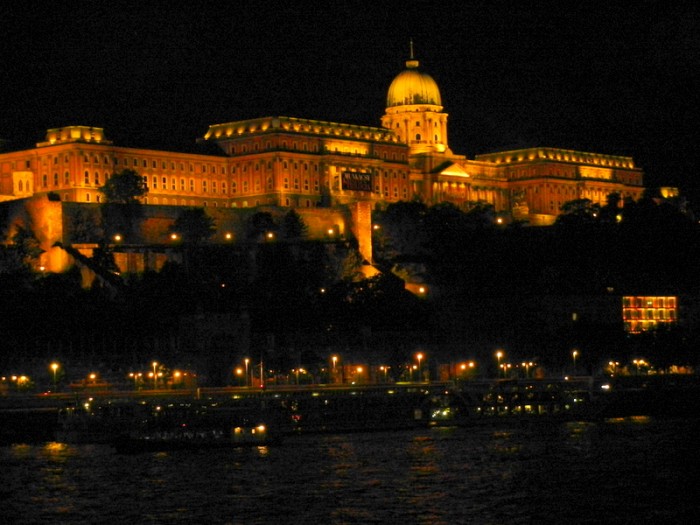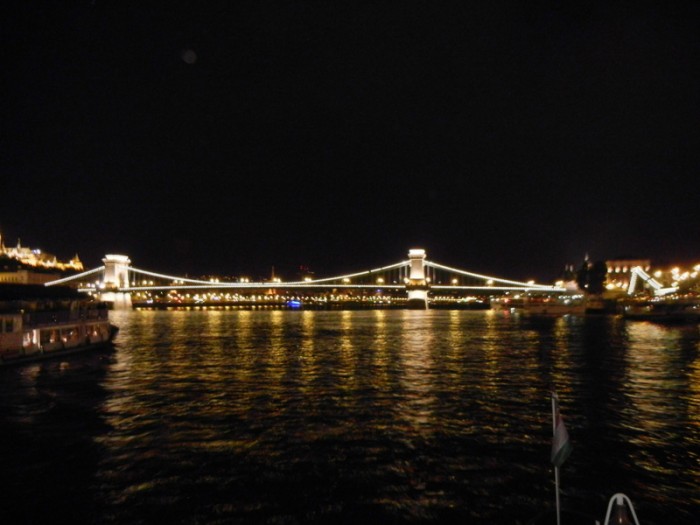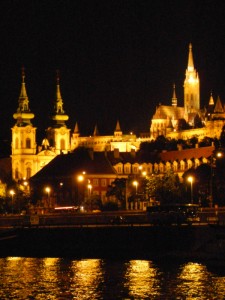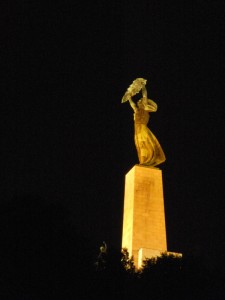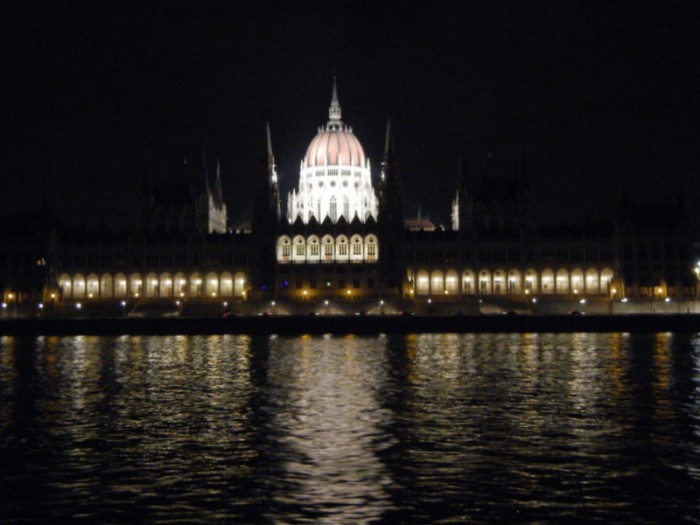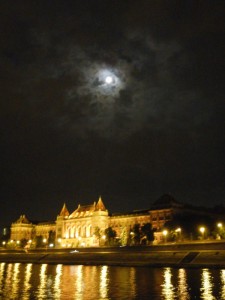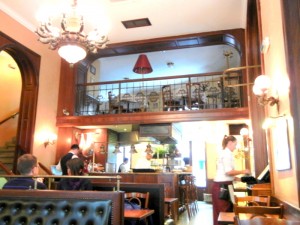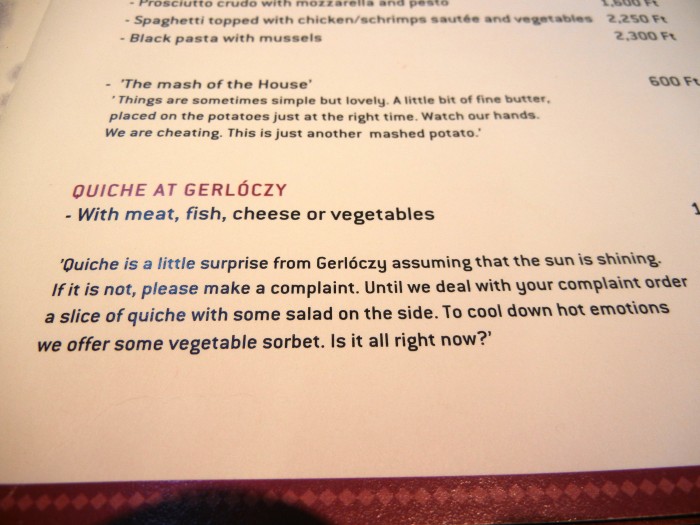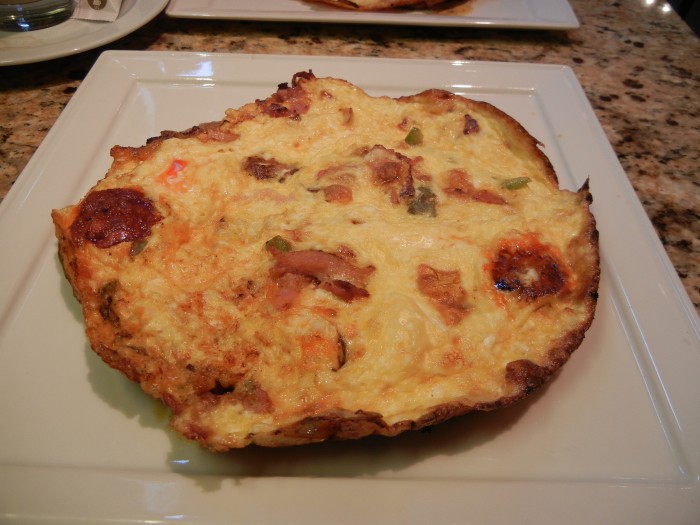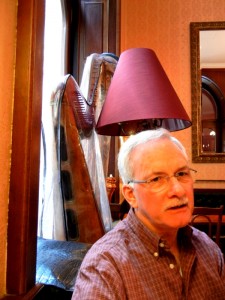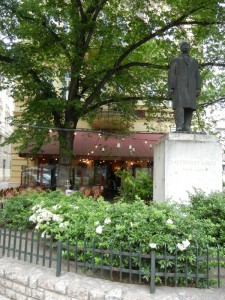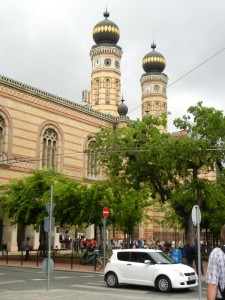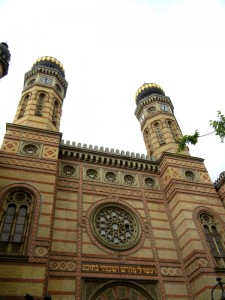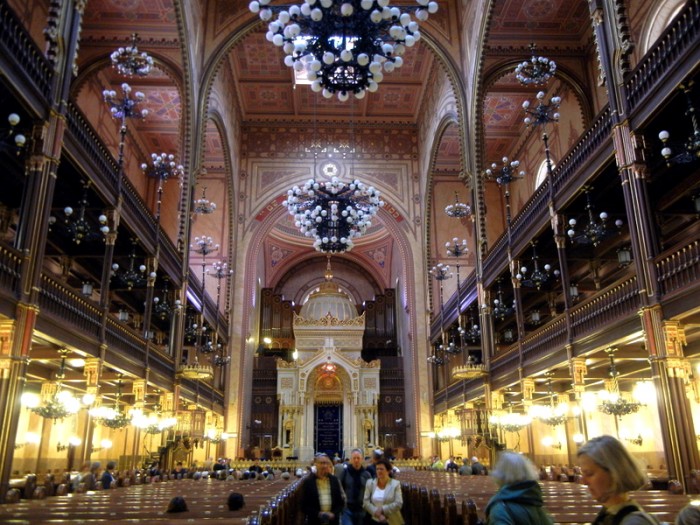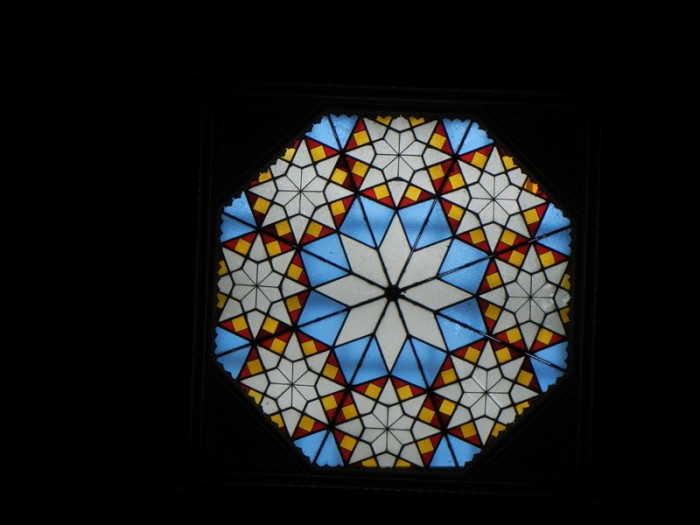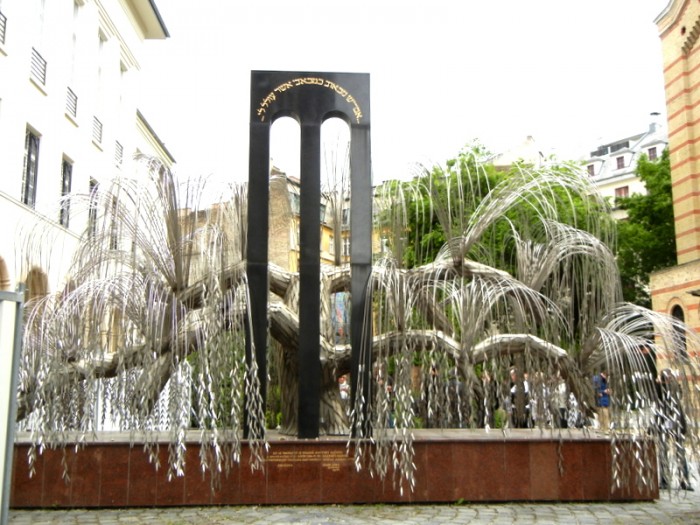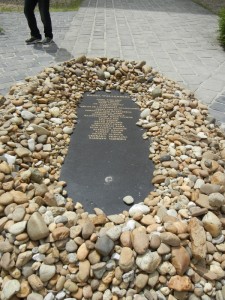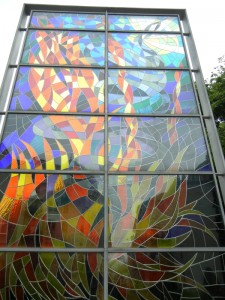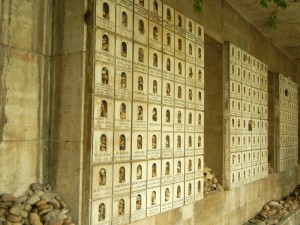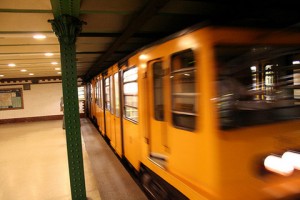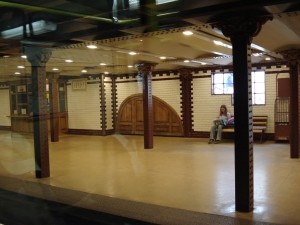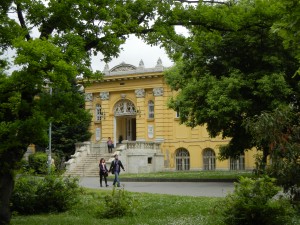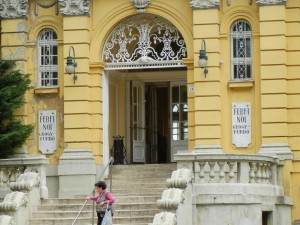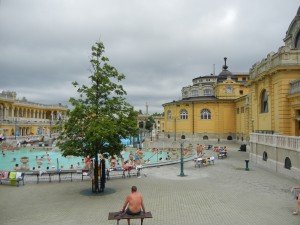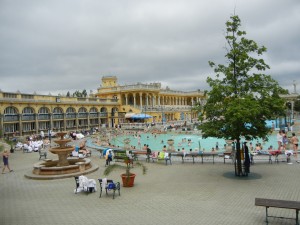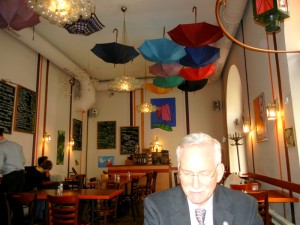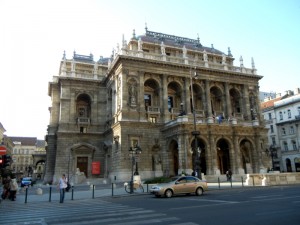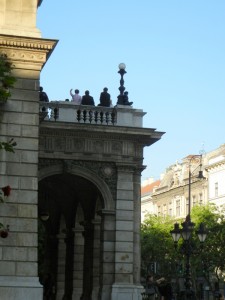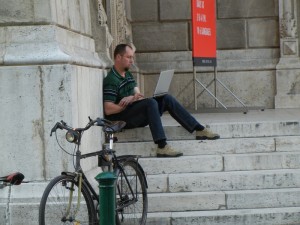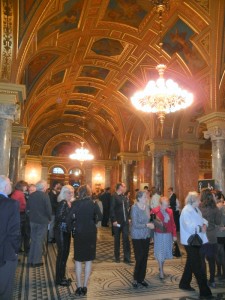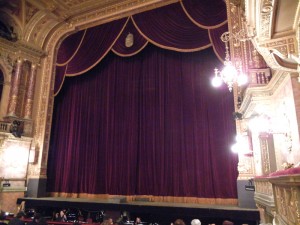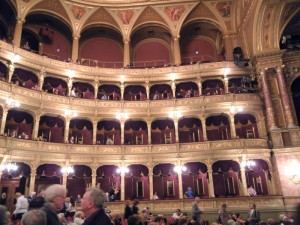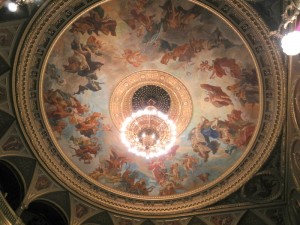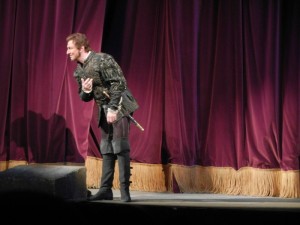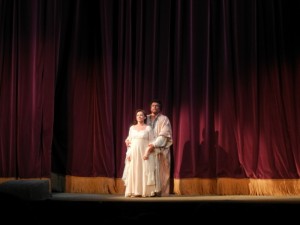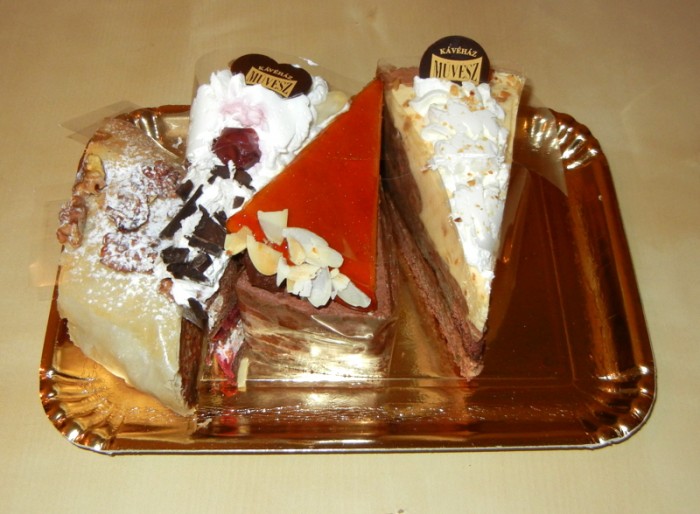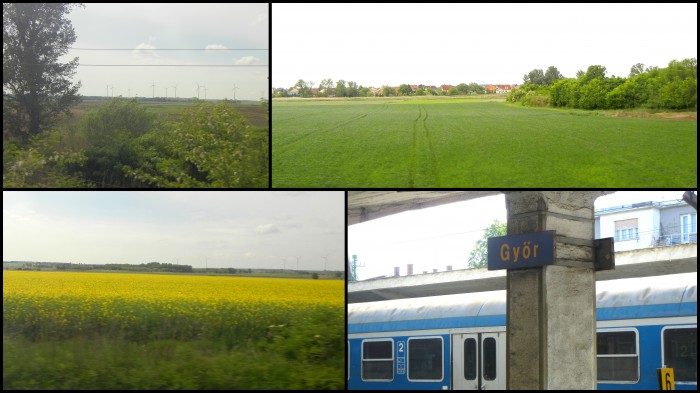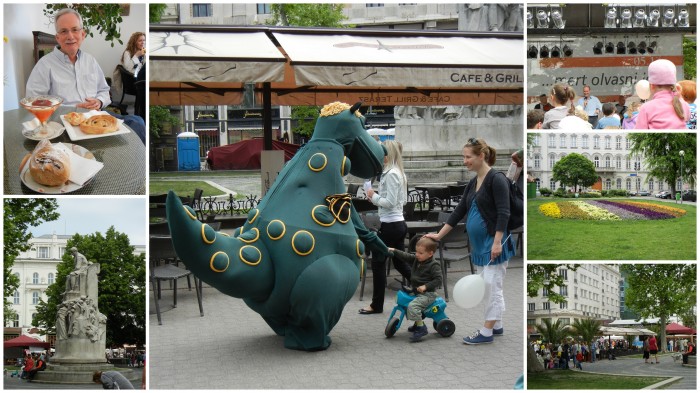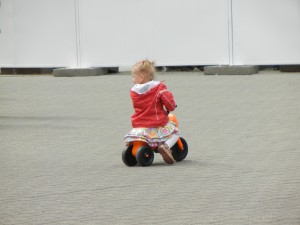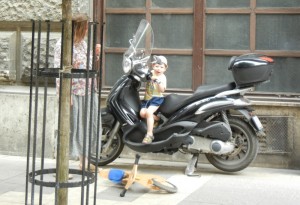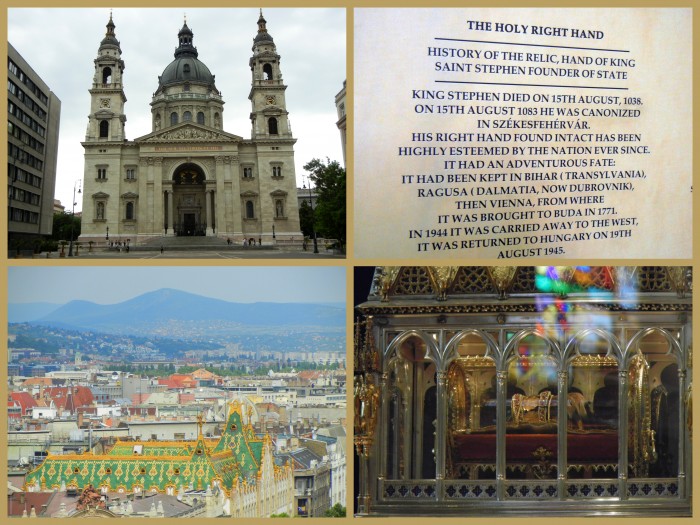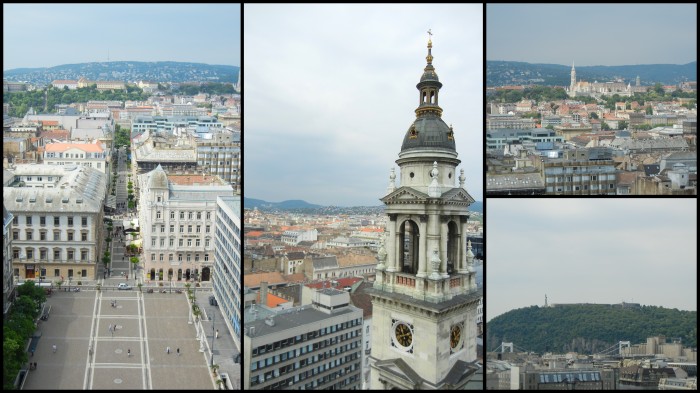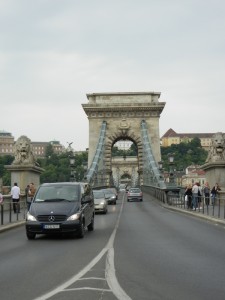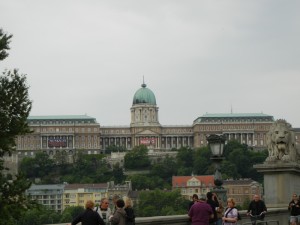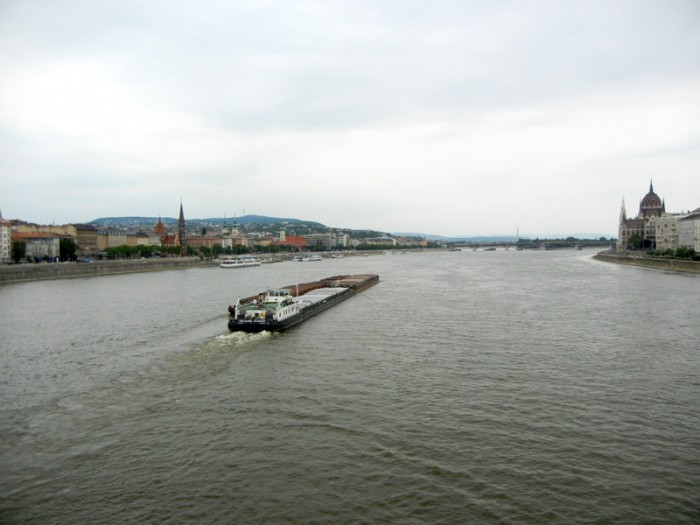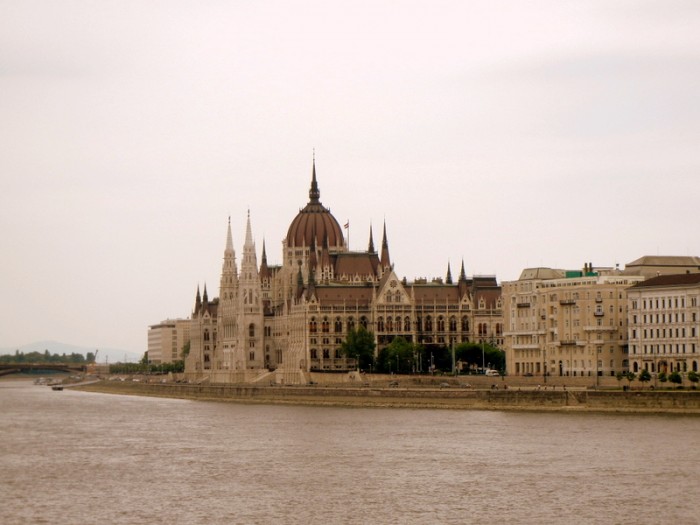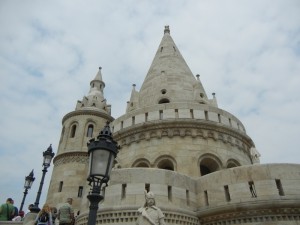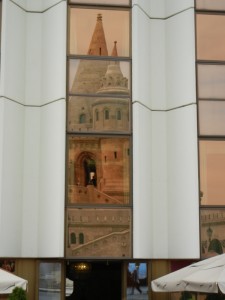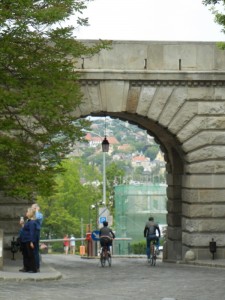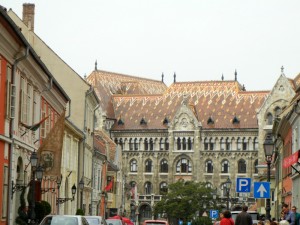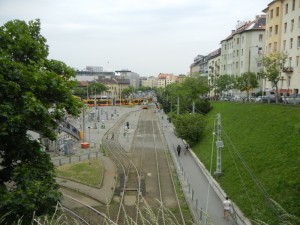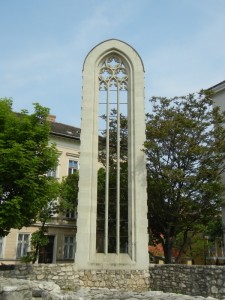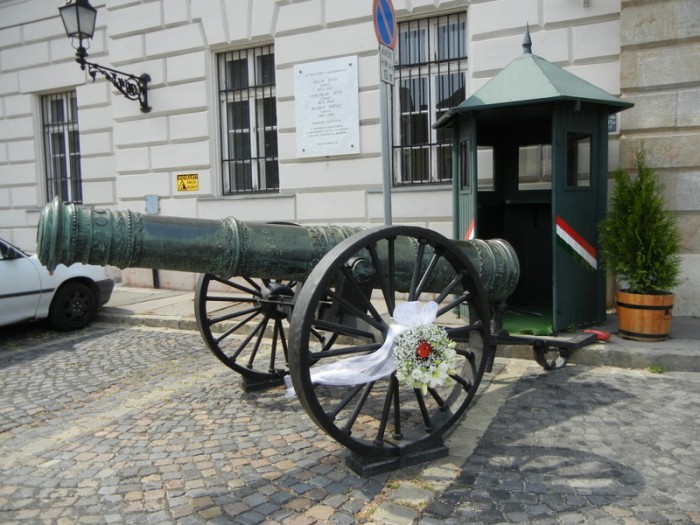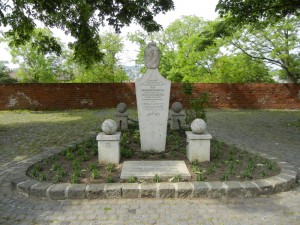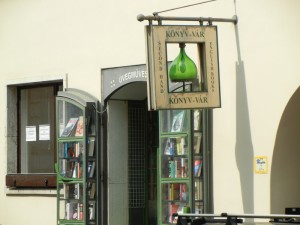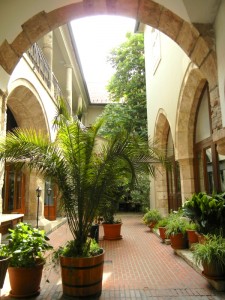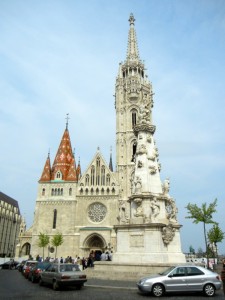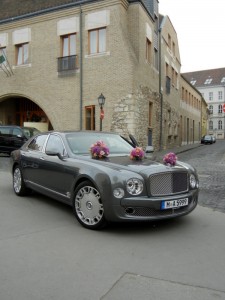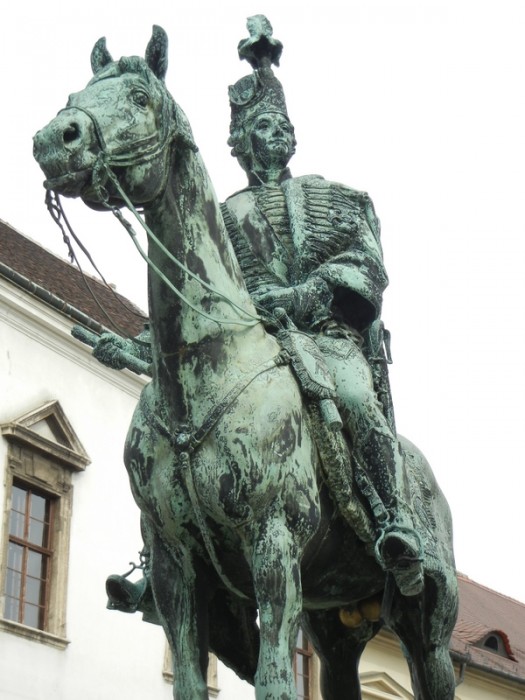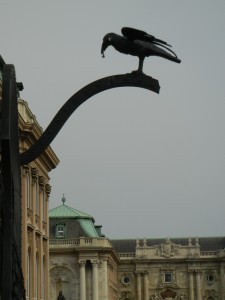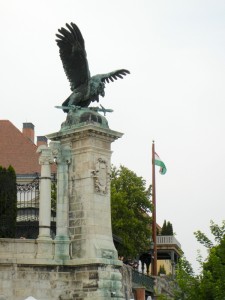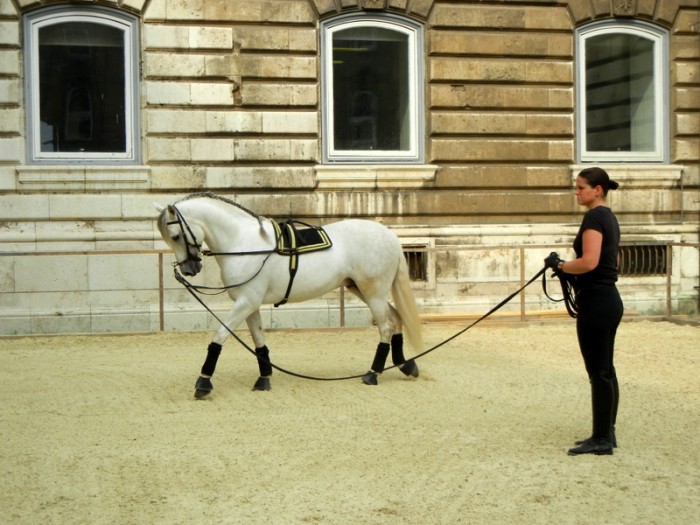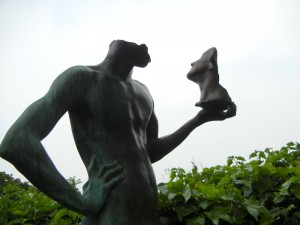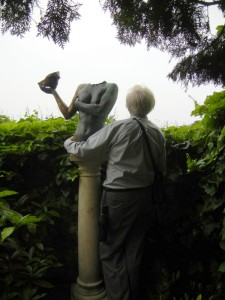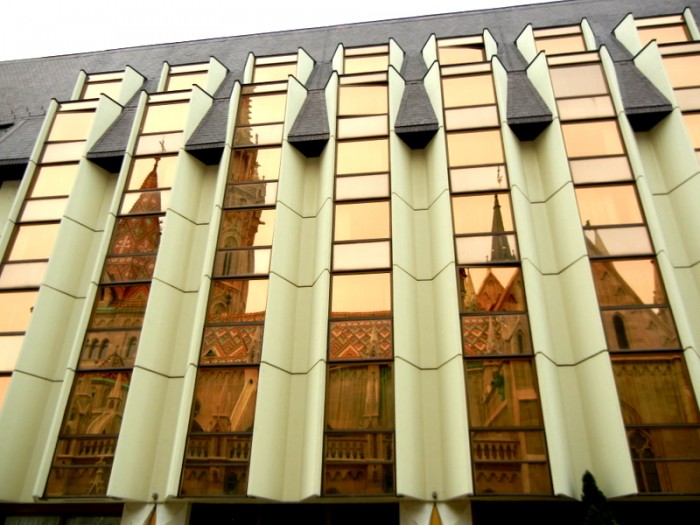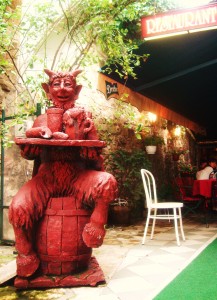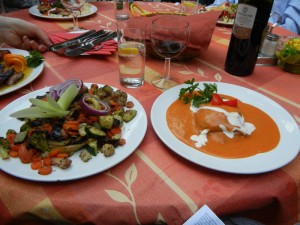So, if you are ever in Budapest, you must take a ride on the Danube at night. I know, it’s a touristy thing to do, but it is one of the major highlights of our visit to this magical city. Our friends had purchased a Hop-On, Hop-off ticket which included the boat ride at night and they invited us along. Thank you, Mary and Charles! Not only did we learn a little more history of the city and locate particular landmarks, we also were thrilled with the views. Unfortunately this is point and shoot digital photography at night, so this is the best I could do.
The next day we used our guidebook to find the highly recommended Gerloczy Cafe. We were not disappointed. From the menu to the food, the experience was sublime and a great way to start the day!
If ever I open a restaurant, I want to have a menu like this. I tried to figure out how I could stick one into my already packed handbag, but, in the end, decided to photograph some of the choice pages.
No one was bothered, or emotional, but the quiche (Hungarian style with spicy sausage) was most definitely all right! How more wonderful can a place be that features Irish Harp?
Outside there is a statue of the united city’s first mayor (Budapest was only united in 1873).
From the cafe, we went to the Great Synagogue. The synagogue, also known as Dohány Street Synagogue (Nagy Zsinagóga or Dohány utcai Zsinagóga), is located in downtown Budapest. It is the largest synagogue in Eurasia and the second largest in the world, after the Temple Emanu-El. What is interesting about this synagogue, built between 1854 and 1859 is its Moorish Revival style and elements (rosette window, organ) that make it seem almost like a church. (Franz Liszt and Camille Saint-Saëns played the original 5,000 tube organ built in 1859.) Our tour guide told us that was the idea at the time, to ‘fit in’ with the dominant culture.
The synagogue was impressive [has a capacity of 2,964 seats (1,492 for men and 1,472 in the women’s galleries)] but even more so was the Museum, with articles from Judaica all over the world. The third part of the visit brought us to the sobering Holocaust remembrance.
Our guide called this The Tree of Life, but it is also known as the Weeping Willow, with names of those lost in the Holocaust inscribed on the leaves. This sculpture is part of Raoul Wallenberg Park, which sits in back of the synagogue.
The words on the structure at the front read: “Whoever saves a soul for mankind, saves the entire world.”
Both Jewish victims of the Holocaust and ‘righteous gentiles’ are memorialized here. Some of the ‘righteous gentiles’ include priests and ministers who buried torahs from various synagogues in their church cemeteries to hide them from the Nazis.
We spent a long time at the synagogue, and after that, took a long walk to process all that we had seen. We know of this inhumanity but there is nothing quite like hearing about it from children and grandchildren of those who experienced it, and nothing quite like seeing the reminders of it on the soil where it occurred. Never forget.
~~~~~~~
Budapest is known for its thermal baths. You would think that Bill, of all people, would be most interested in checking these hydrogeologic features out first hand. We even packed swimming suits! Alas, we ran out of time to do anything but make a quick trip out to the Szechenyi Baths, not to get in but to at least see them.
To get there, you take Line 1 of the oldest metro system on the continent (London’s is older but it’s not on the continent!). The trains look very old and the stations even older, but classic in a sort of late 1890’s way.
The baths are located in a beautiful park.
Once there, you have a choice of bathing au naturale with people of the same gender or sharing space together with mixed genders, hopefully with some clothing on. Next time!
We zipped back to our apartment to change for the Opera and go out to dinner. The feel of Budapest is very liberating; even the restaurants reflect this style.
Budapest’s Opera House is large and about as ornate as Vienna’s which seems less ornate than the one in Graz! The acoustics were superb and the opera itself very well sung: Otello, another Verdi opera and we knew the story so trying to read the HUNGARIAN text across the top of the stage didn’t matter. (my next language is going to be Italian, however!)
This was a very long opera. By the time we found our coats, pulled out the umbrellas (no they did NOT come from the restaurant), and walked to a nearby bar/bakery, we found it was closing in 10 minutes. There was no time to eat in, so we did what all good Americans do…we asked for take out pastry. I thought the maitre de was going to fall over, but he obliged and even put our desserts to go on a little (cardboard) gold tray!
I don’t remember the name of any of these but it didn’t matter – they were delicious!
We’ll be back, beautiful Budapest.

